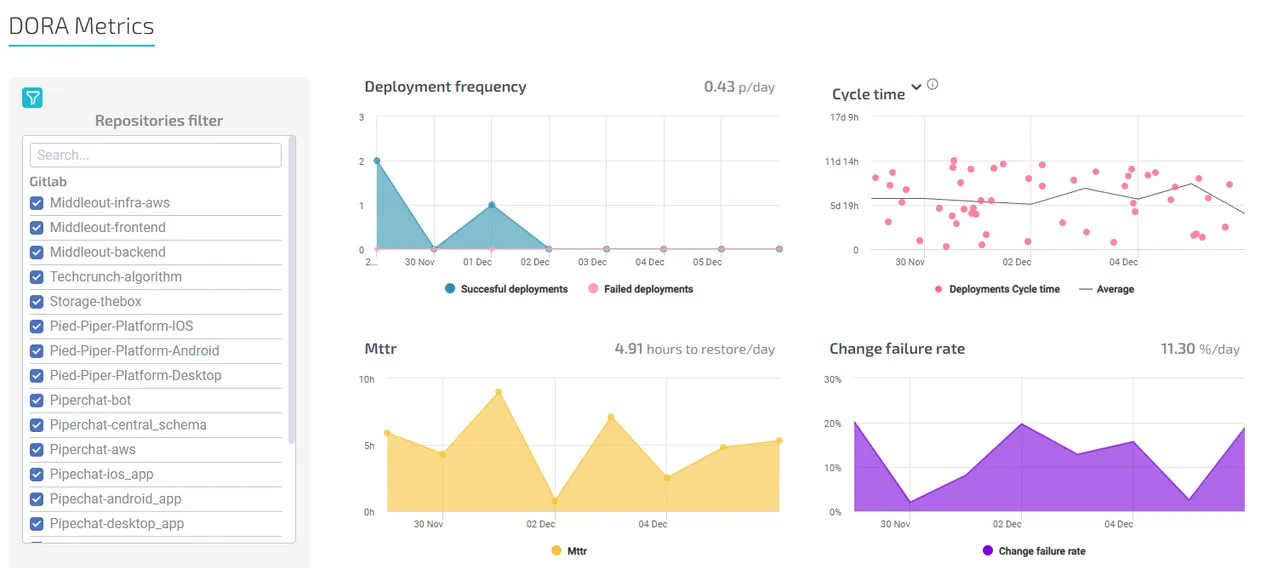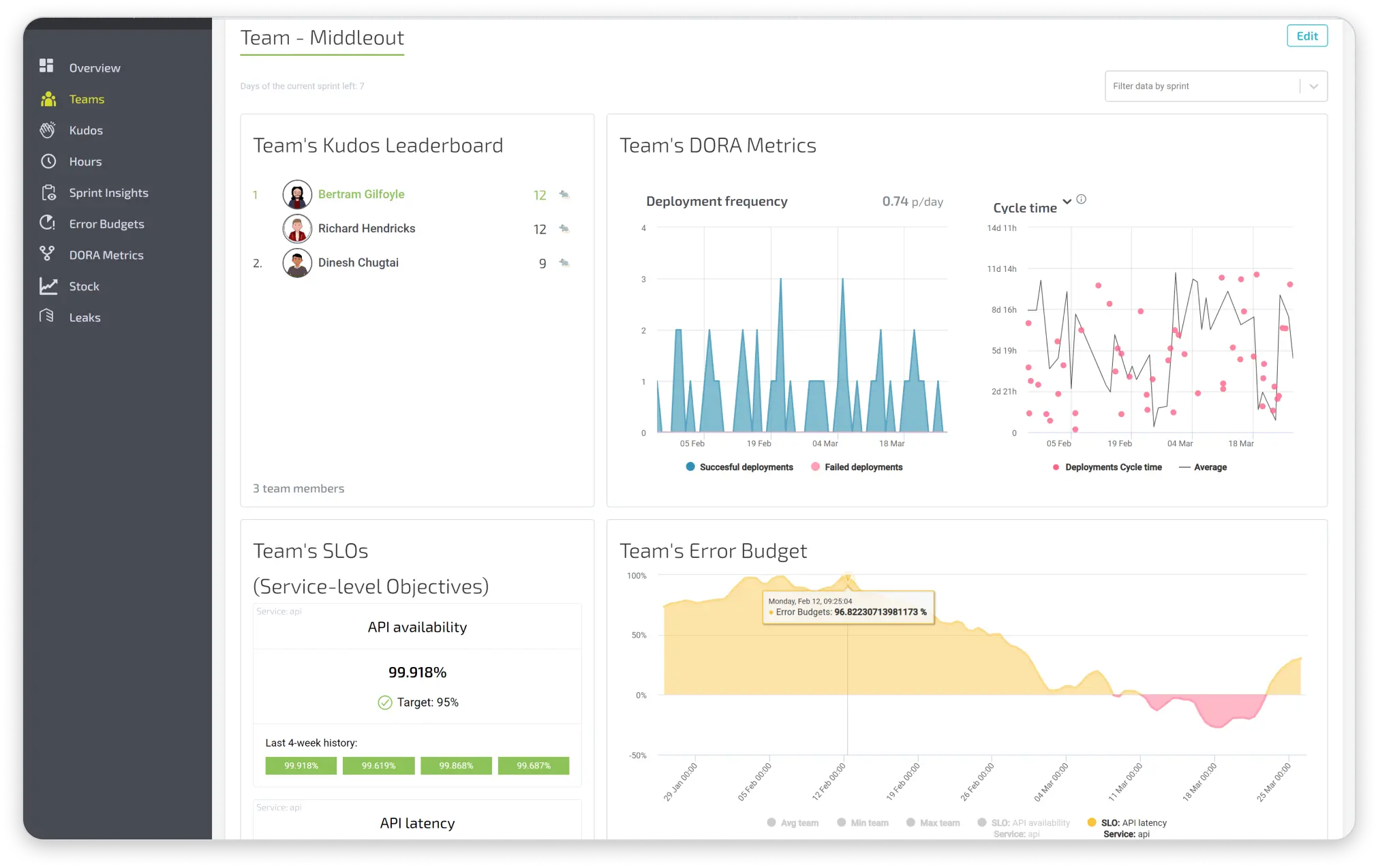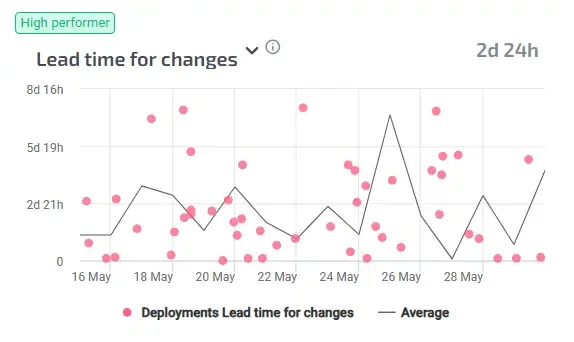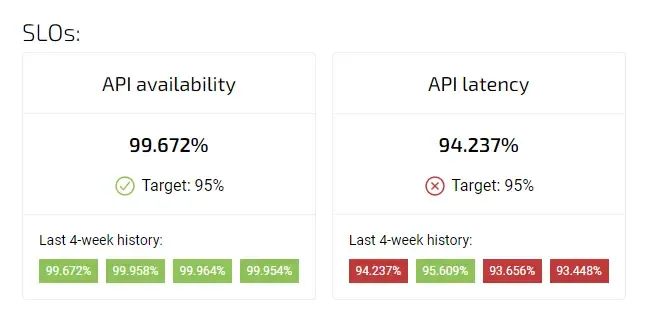What DORA Metrics Can Reveal About Your Team Performance

Published on 6 December 2023 by Zoia Baletska

Ever wondered how fast your code goes from "I got an idea" to "Boom, it's live"? That's where Lead Time for Changes comes in – it's like your code's speedometer. Wanna know if your code changes are speedy like The Flash or just taking a stroll? In coding, finding the perfect rhythm is the key!
DORA Metrics and Change Lead Time
Lead Time for Changes is one of the DORA Metrics. Lead Time for Changes measures the time it takes for a code change to progress from the initial commit to being deployed and running in a production environment. This metric essentially quantifies the speed and efficiency of your development pipeline, offering valuable insights into the effectiveness of your team's workflows.
Key Components of Lead Time for Changes are:
- Commit-to-Deploy: This is the duration from the moment a developer commits a code change to the version control system to the point where it is successfully deployed in a production environment.
- Review and Approval Time: Lead Time for Changes includes the time spent on code review and obtaining necessary approvals before a change is merged into the main codebase.
- Build and Test Time: It accounts for the time taken to build and test the code change to ensure it meets quality standards and doesn't introduce regressions.
- Deployment Time: This is the time it takes to deploy the code change into the production environment, making it available to end-users.

Lead Time in Agile Analytics
So, what does Lead Time for Changes reveal about your team's performance?
Efficiency of Development Processes
Short Lead Times: Teams with short lead times demonstrate high efficiency in their development processes. For example, if a code change moves seamlessly from development to deployment in a matter of hours, it indicates an optimised pipeline.
Potential Bottlenecks: On the contrary, prolonged lead times may signal bottlenecks in various stages of the development lifecycle. For instance, a code review or testing delay might extend the lead time, highlighting areas that need attention and improvement.
Agility and Responsiveness
Short Lead Times: A Short Lead Time for Changes reflects the team's agility and responsiveness to changing requirements. Suppose a team can implement and deploy user-requested features within a short timeframe. In that case, it suggests adaptability and a capacity to meet market demands swiftly.
Long Lead Times: Extended lead times may hinder a team's ability to respond promptly. For instance, if a competitor introduces a new feature, a team with long lead times may struggle to match the pace, potentially affecting its competitiveness in the market.
Identifying Bottlenecks
Code Review Bottlenecks: If lead times are primarily extended due to lengthy code review processes, the team might need to assess and optimize its review mechanisms. This could involve implementing tools for automated code review or establishing clearer guidelines for more efficient reviews.
Testing and Deployment Challenges: If testing or deployment times significantly contribute to the lead time, addressing these areas could involve investing in automated testing procedures or refining deployment scripts for faster and more reliable releases.
Continuous Improvement Opportunities
Setting Reduction Targets: By regularly monitoring lead times, teams can set targets for lead time reduction. For example, if the average lead time for changes is currently two days, the team might aim to bring it down to one day over the next few sprints.
Iterative Process Refinement: Teams can leverage lead time insights to refine their processes iteratively. If a retrospective analysis reveals that lead times increased after a certain process change, the team can revert or adjust the change and observe the impact.
Conclusion
The Lead Time for Changes metric serves as a versatile tool for teams to assess and enhance their development practices. Teams can pinpoint areas for improvement using DORA Metrics, foster a culture of collaboration and continuous improvement, and ultimately deliver higher-quality software more efficiently.
For teams keen on harnessing the power of DORA metrics, our amazing Platform, Agile Analytics, is ready to assist! Unlocking a wealth of insights, this app provides an easy-to-set-up and easy-to-operate tool for measuring productivity and optimising development processes.

your DORA Metrics in Agile Analytics
Curious to experience the transformative impact? Take advantage of our free 60-day trial or book a demo with our talented team of Agile Coaches. Witness firsthand how Agile Analytics can propel your team towards enhanced efficiency and success.
Implement DORA metrics in no-time flat
DORA metrics are the best objective performance measure for your teams. Find out how to set them up in no time flat here.






